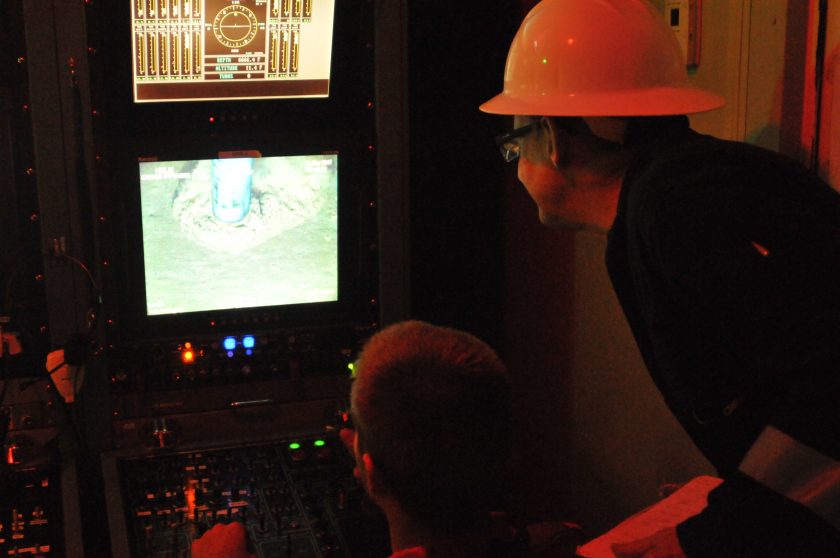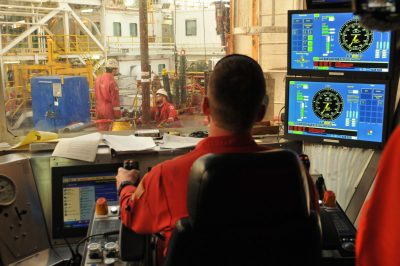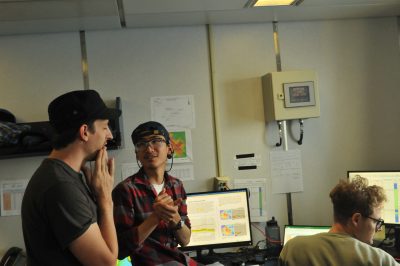Hitting Bottom and Beyond
May 12, 2017

This is the second post in a series on the Jackson School-led mission to drill for samples of methane hydrate from under the Gulf of Mexico for scientific study. Read the first post here.
Gulf of Mexico – Thursday was a good day for the Jackson School crew and a milestone in the history of The University of Texas at Austin. After more than 24 hours of tripping pipe, the drilling string finally touched the Gulf bottom some 6,719 feet below the Helix Q4000.
Contact with bottom – known in the industry as spudding – occurred sometime after 8 a.m. after a long night of waiting. First indications were that spudding could occur around midnight, but the schedule kept slipping, building both anticipation and anxiety for Professor Peter Flemings, who is running the scientific expedition to drill for samples of methane hydrate.
Flemings kept tabs on the operation by alternating between the rig’s drilling room and the remotely operated vehicle (ROV) shack, where Helix crew members control the vehicle that follows the drilling string on its journey to the seafloor and beams back a constant video feed.
“You guys get to do this all the time, but professors get to do this like once in their life,” Flemings joked with the crew.

About an hour after the drill string made contact with the seafloor, the drill began to rotate and bore under the Gulf. The drilling officially began.
“This is the first time that The University of Texas has ever drilled as an operator,” Flemings said with an exhausted smile.
All the while Flemings was watching the historic drilling, the music the crew had on softly in the background was fittingly Phil Collins’ “In the Air Tonight.” No joke, I promise.
Now the scientists are waiting for the drilling to hit 8,062 feet so they can begin the process of bringing methane hydrate cores up from under the Gulf and dive into the analysis. They hope the drill hits that point sometime over night or in the early morning hours.

To Jackson School graduate student Tiannong “Skyler” Dong, who was keeping tabs on the progress Thursday evening, things were getting tantalizingly close.
“Only 500 feet more to go,” he said. “So close, we could just walk there.”
Anton Caputo, Jackson School Communications Director
